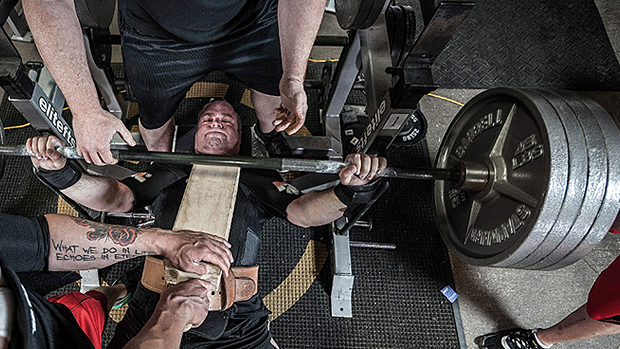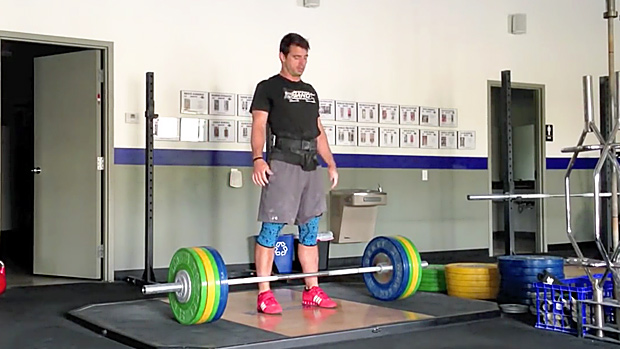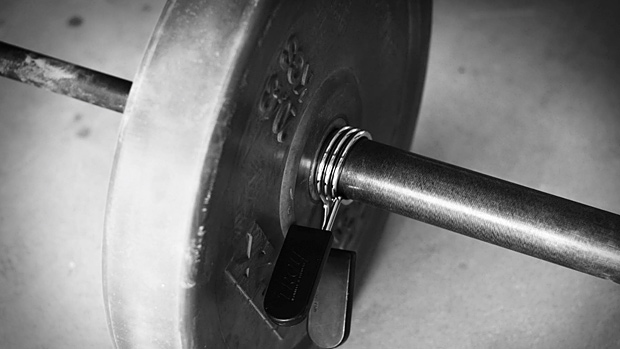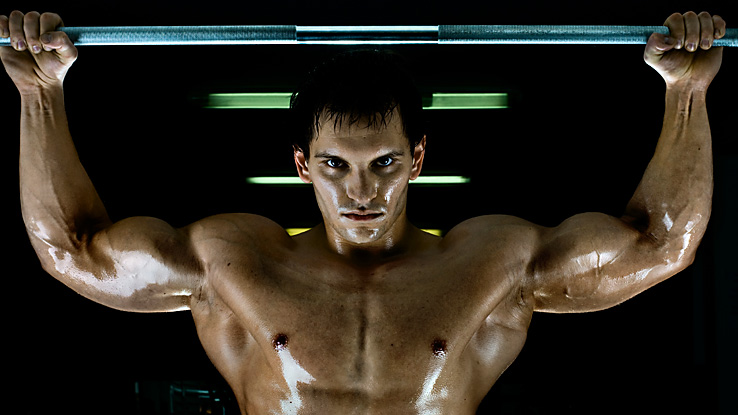Over the past few years I've seen many lifters and coaches discussing the seemingly strange movements I prescribe for strength development. Many of these guys are grasping the big picture but missing many of the finer points. To remedy this, I've decided to begin this "toolbox" series to help experienced lifters fill in the blanks and newer lifters learn about some very effective exercises.
You'll notice that many of the movements in this toolbox are "assistance" or "accessory" exercises designed to assist the big lifts: squat, deadlift, and bench press. This all goes back to a fundamental truth in strength training: to get stronger, a lifter must discover his weak points, then work to bring them up. These exercises will do just that!
Hex Head Dumbbell Holds
- Category: Accessory
- Muscles Targeted: Forearms
- Exercise Description: This exercise is great if you're having grip problems. Get a hex head dumbbell and pick it up by one end.

Obviously, the size of your hands will greatly limit the amount of weight that can be used on this exercise. Once your hand strength increases, you can add weight by using ankle weights attached to the dumbbells. These are generally done for time. Try holding on until you reach failure, or try to beat a certain time records (for example, a ten or twenty second record).
You can do these with both hands or one at a time. Chalk is always used and, as a general rule, no part of your hand or fingers can touch the engraved numbers on the bell. This is cheating!
Band Leg Curl
- Category: Accessory
- Muscles Targeted: Hamstrings
- Exercise Description: This movement is performed the same way you'd do a regular leg curl. The main difference with the bands is you don't have to stay on the same plane; you can take a few reps out to each side at a bit of an angle. This allows you to hit the hamstrings from several different angles.

This movement can be cycled several different ways. For example, it can be done at the end of your training for standard sets and reps, or it can be performed using the timed method where you try to do one rep every five to ten seconds for several minutes. During the time you're resting, make sure to keep some tension on the muscle.
Band leg curls can also be performed during an extra workout. I've used this method with many athletes who have weak hamstrings. Start with five reps on each angle (straight ahead, off to the right, and off to the left). This would be a total of 15 reps. Over the next couple of weeks, add one rep to each angle. After ten days you'll be up to 15 on each angle or 45 total reps.
Also, make sure to skip a day every now and then for better recovery. I'd suggest a three on, one off schedule.
Band Pull-Apart
- Category: Accessory
- Muscles Targeted: Upper back
- Exercise Description: This is an excellent exercise that can be done at home for extra upper back work. Grasp a mini-band or light resistance band and hold it out in front of you with a shoulder-width grip. Your arms should be straight or just slightly bent. From this point simply pull the band apart until your arms are at your sides. Hold this position for a second and return to the starting position.

The difficulty of this exercise will depend on how wide or narrow your hand position is on the band. The wider your hands, the easier it'll be. This exercise should be done for higher reps, around 12-20.
45 Degree Back Raise
- Category: Supplemental and accessory
- Muscles Targeted: Low back, glutes, hamstrings
- Exercise Description: Position yourself in the equipment so that your hips are just above the pad. Bend at the waist so your head is near the ground and raise your torso by arching your back and contracting your glutes and hamstrings. To emphasize your hamstrings, dig your knees into the pad and perform a leg curl at the top.

Use a bar across your back, a weight plate behind your head, or a medicine ball across your chest to make the exercise more difficult. You can also place a resistance band around your neck and attach it to the equipment for added resistance.
Board Press
- Category: Supplemental and accessory
- Muscles Targeted: Triceps, pecs, front delts
- Exercise Description: I often prescribe the board press to lifters who stall at the top of the bench press and can't lockout. The best movement for a weak lockout is a three or four board press. Use three or four 2 x 6 boards placed on your chest and lower the bar to the boards, pause, then press back up.
These are best done using the max effort method. This is the method where you work up to a one or three-rep max on the movement.
Pull Through
- Category: Supplemental and accessory
- Muscles Targeted: Low back, hamstrings, glutes
- Exercise Description: Begin by facing away from a low pulley cable with a single "D" handle or triceps rope. Bend over and grab the handle between your legs while facing away from the machine, then pull the handle through your legs until your body is in an upright position.

This movement is best trained with four to six sets of 10 to 15 reps.
Elbows-Out Extensions
- Category: Supplemental and accessory
- Muscles Targeted: Triceps
- Exercise Description: If you ever get a chance to see a great bencher, take note of all that triceps mass right above the elbow. This is where big benches come from, not the upper part of the triceps. The elbows-out extension is designed to bring this area up to par.

To perform the movement, press the dumbbells to the starting position above your chest. You want to keep the butts of the bells together as you lower them to your chest, keeping the elbows out. Pause on your chest for a second, then press and extend the dumbbells back to the starting position while making sure to keep the butts together.
Conclusion
If your progress in the big lifts has stalled, try a few of these exercises and bring up those weak points! For more info, be sure to checkout my Eight Keys series.





